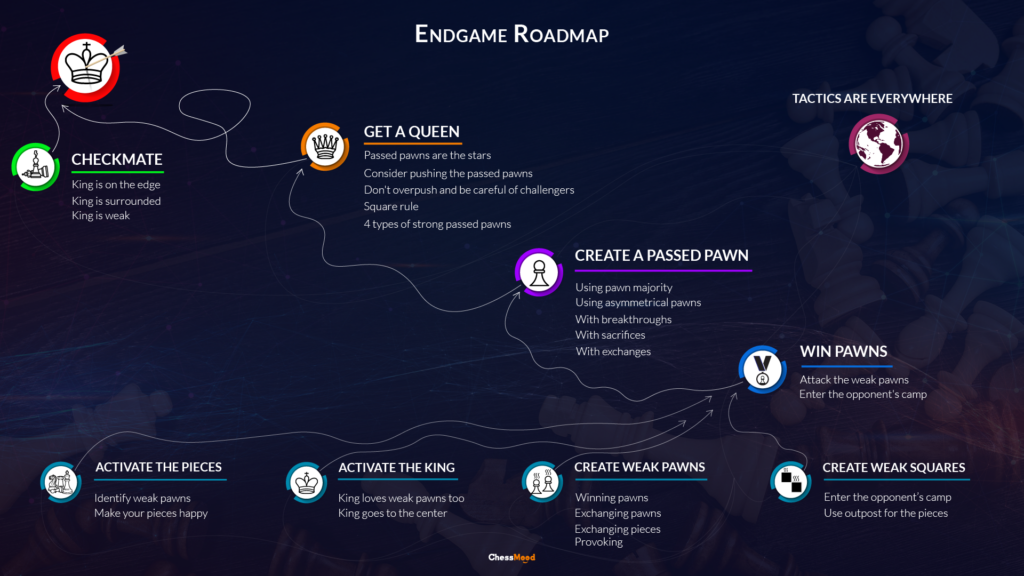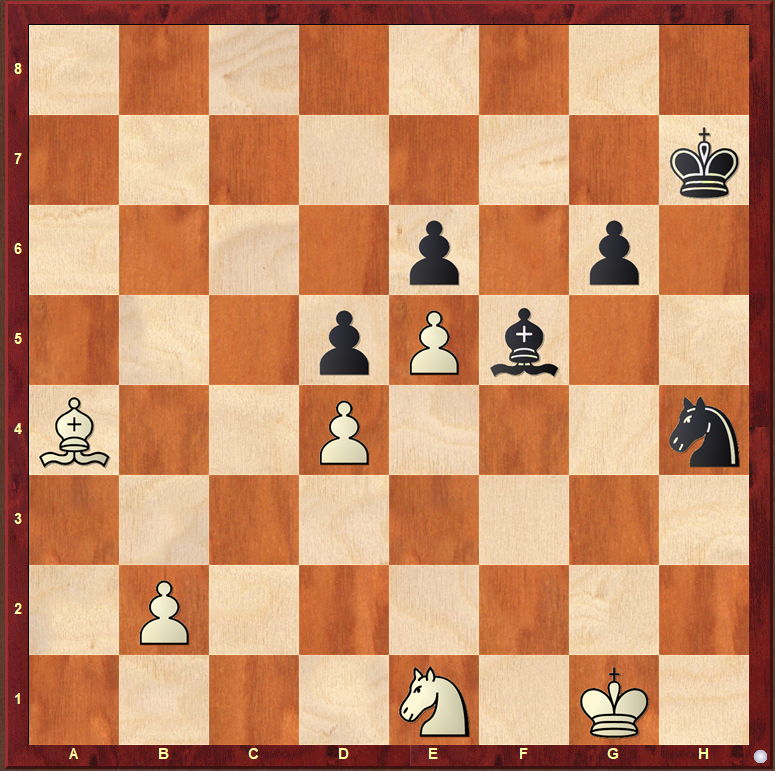Endgames. Ugh, so boring you might think. I know this isn’t the favorite phase of the game for many. But I hope after reading this article you will change your mind at least a little bit.
Why?
Because you will learn how to find a smart plan in any kind of endgame. And once you find smart plans, you will find good moves and win more games. And this leads to a higher enjoyment of endgames.
The Endgame Roadmap
I recently discovered a very simple and actionable endgame Roadmap by Grandmaster Avetik Grigoryan. It was one of the rare times I thought “I wish I would have come up with this myself.” The simple goal of the roadmap is to give you a compass for any endgame position.
You can understand where you are on the roadmap and then find a plan that leads you to your ultimate goal: checkmate! Knowing that goal, Avetik reverse-engineered a map that guides you through the endgame jungle. I bet with my guided questions, you will be able to create the roadmap yourself. Let’s try this out.
- What is the ultimate goal of a chess game? —> Checkmate
- Which piece helps you most frequently with Checkmate? —> the Queen
- How do you get a queen? —> by promoting a passed pawn
- How do you get passed pawns? —> by winning pawns of the opponent
- How do you win pawns of the opponent? —> by activating your pieces, your king, and creating weak pawns & squares
Combining all these factors, we get the Endgame Roadmap below:

The Endgame Principles
You might have heard of principles like “activate your King” or “create passed pawns”. These help, but only if you use them at the right moment. This is where this roadmap is so handy.
Activating your King isn’t necessary if you can already promote your passed pawn! This might be glaringly obvious now, but sometimes during the game, it isn’t.
In the example below shared by Avetik, his friend could have simply promoted a pawn to a Queen but instead activated his King.

After b4 there is no stopping this pawn anymore. Nor the Bishop on f5, Knight on h4, or King on h7 can do anything against the promotion of this passed pawn.
As getting a Queen is higher up on the roadmap than activating your king, you should give that priority. Other principles such as
- Don’t get doubled pawns
- Rooks belong behind passed pawns
- The Knight is the best blockader of passed pawns
are supporting the main steps along the road. Now thanks to a sensible map that puts all the pieces together, you will be able to apply them in the right situations.
Using The Endgame Roadmap In-Game
To use the roadmap effectively, I came up with some guided questions that should help you understand which step you are on and what is next.
At any point, you can ask yourself the following questions. If the answer to one step is yes, then proceed to that point of the map. As long as the answer is no, go back until you find a question you can answer with yes.
Can I:
- Checkmate the opponent’s King?
- Promote a passed pawn into a Queen?
- Create a passed pawn?
- Win a pawn?
If those questions are all answered with no, it is time to use the initial steps of the Roadmap:
- Activate Your Pieces
- Bring your King into the game
- Create weak pawns
- Create weak squares
Using those 4 basic principles will help you move up to the next steps on the Roadmap, which eventually leads to checkmate.
Learn More About The Endgame Roadmap
Liking the endgame already a little better? I’m sure you will once you try the roadmap in your own games. Remember to watch out for simple tactics along the way and you are good to go.
If you want to learn more about the Endgame Roadmap by GM Avetik Grigoryan, I highly recommend checking out his short and actionable course on it.
You will not only see many examples of using the roadmap the right way but also learn:
- 4 types of strong passed pawns you should look for
- When and when not to push the passed pawns
- 5 ways to create a passed pawn
- When to activate the pieces first and when the King
- 4 ways to create a weak pawn
- 3 scenarios when you should think about a straight mating attack
- Strategies on how to play if you’re the one to defend
- The 1st question you should answer when defending
The recommended rating range for the course is 800-2100 according to ChessMood.
I think it is a total game changer for players below the level of 1700 and a nice refreshing new look at endgames for players between 1700-2100.